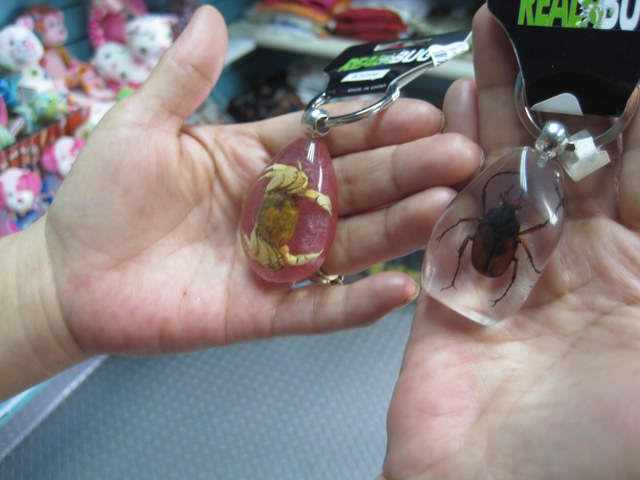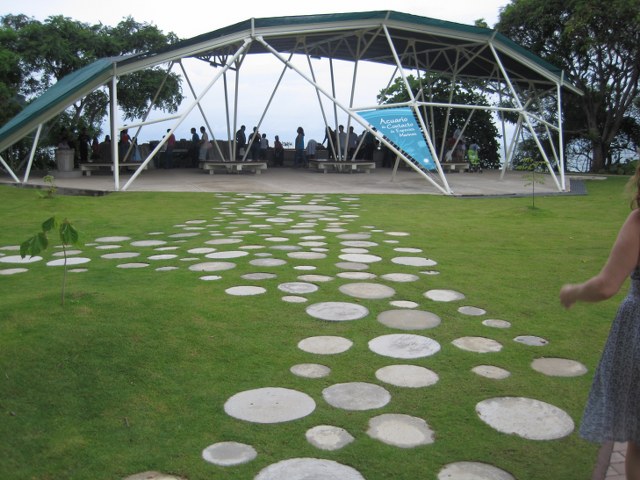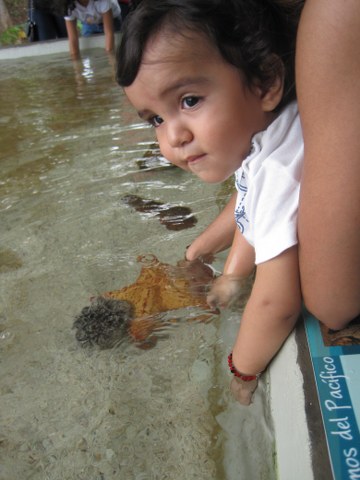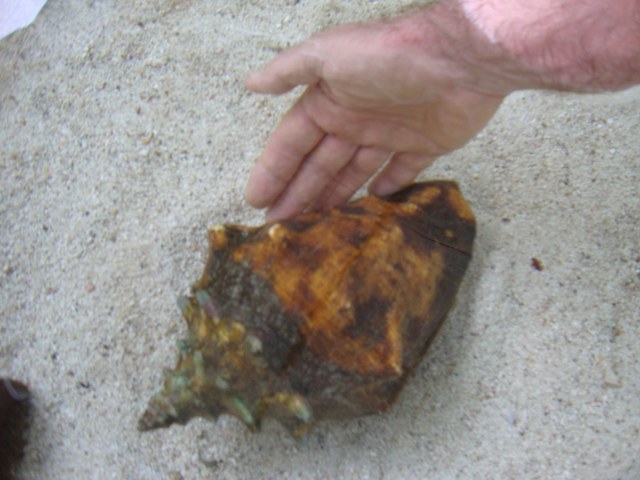Petting the Sea Cucumbers at the Punta Culebra Nature Center in Panama

Last weekend my wife and I headed out of Panama City proper to the Amador Causeway to check out the new marine “petting zoo.” We took a taxi to the first island, Naos, and turned in by the Mi Ranchito restaurant. Even if we had not been there before it would have been hard to miss from the line of cars waiting to enter of a Sunday afternoon. The “petting zoo” is a new exhibit at the Punta Culebra Nature Center. Punta Culebra is an educational project of the Smithsonian Tropical Research Institute (STRI). The Smithsonian first came to Panama to study the effects of the canal on flora and fauna 100 years ago and established a tropical research station some years later. It is in Panama that STRI has its headquarters for tropical research activities that span the globe. The Punta Culebra Nature Center is open seven days a week and costs $2 for adults, $1 for jubilados, and $0.50 for kids. The new outdoor aquarium setup was just opened and was thoroughly in use on Sunday. The nature center is open every day from 10 am to 6 pm daily. Sundays are especially popular with families out for a day on the Causeway.
Punta Culebra
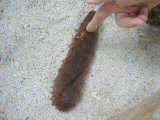 Punta Culabra teaches. In 2002 the Smithsonian launched the project “You and the sea with the Smithsonian.” This program provides a point of contact between the Panamanian school curriculum and the environmental education program of Marine Sciences of the Smithsonian.
Punta Culabra teaches. In 2002 the Smithsonian launched the project “You and the sea with the Smithsonian.” This program provides a point of contact between the Panamanian school curriculum and the environmental education program of Marine Sciences of the Smithsonian.
From the point at which you enter there are signs that demonstrate scientific facts and pique the imagination. The site is gorgeous with a sandy beach (reserved for sea turtle nesting) and a view of the approaches to the Canal at the point. There are several outdoor aquariums with big turtles, sharks, lobsters, miscellaneous large, colorful fish, and baby sharks. There are also a number of glass tanks featuring exotic fish, eels, and the like in the main building.
Besides a wide array of marine life the site has a mammal population including at least one raccoon (mapache) and a sloth (perizoso) that typically gives a great demonstration of why the Spanish word for sloth and the word for lazy are the same.
The Hands On Marine Exhibit On last Sunday the new aquarium was busy with kids (of all ages) petting the sea creatures. Nicole, the docent on duty, was busy answering questions and reminding everyone wanting to use the hands-on aquarium to wash their hands first. If you are interested in what the experience was like here it is. A sea star (estrella del mar) is pretty hard and a sea cucumber (pepino del mar) is rather leathery and decidedly softer. The estrella capitano or captain star is also hard and the sea urchin (erizo del mar) is prickly. The sting rays (rayas) blend in with the bottom of the tank and like to swim away if they get poked too much. Adults as well as kids were having a great time although for one younger girl the whole experience seemed a bit beyond her.
On last Sunday the new aquarium was busy with kids (of all ages) petting the sea creatures. Nicole, the docent on duty, was busy answering questions and reminding everyone wanting to use the hands-on aquarium to wash their hands first. If you are interested in what the experience was like here it is. A sea star (estrella del mar) is pretty hard and a sea cucumber (pepino del mar) is rather leathery and decidedly softer. The estrella capitano or captain star is also hard and the sea urchin (erizo del mar) is prickly. The sting rays (rayas) blend in with the bottom of the tank and like to swim away if they get poked too much. Adults as well as kids were having a great time although for one younger girl the whole experience seemed a bit beyond her.
Last but not least the Punta Culebra Nature Center has a gift shop with tons of great stuff. There are informative books for kids and adults, neat items like beetles and crabs encased in plastic for use as key pendants, and wonderful stuffed wild animals and the necessary Panama and Smithsonian tee shirts. For more information about the nature center visit http://www.stri.org/english/visit_us/culebra/.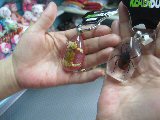
The Smithsonian Tropical Research Institute, headquartered in Panama, promotes understanding of the tropics and their importance for the well being of humanity. It carries out relevant studies throughout the world and promotes conservation of tropical ecosystems. For more information about the work of STRI visit www.stri.org.



